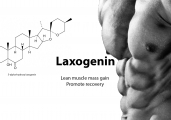Low Testosterone: When Do Men Need Treatment?
While the amount of men seeking testosterone treatment has tripled over the past decade, many patients who need hormone replacement for a testosterone deficiency aren't receiving it.1 When low T occurs due to poor functioning testes or a tumor on the pituitary , for instance , the result could also be hypogonadism.
Recognizing this trend has led to the publication of guidelines for the diagnosis and management of testosterone deficiency in men by the American Urological Association1 (AUA) and an updated best practice recommendation from the Endocrine Society.2
You may have an interest in these related articles:
IBS and Diabetes: what is the Connection?
How Your Hunger Hormones Control Weight Loss
What you ought to realize At-Home Thyroid Test Kits
6 recommendations on the way to affect Seasonal major affective disorder
Hypogonadism may be a sort of low testosterone that ought to be treated and monitored.
“The use of testosterone therapy has increased dramatically in relatively healthy men without a transparent indication of testosterone deficiency (low T), while other men in need of testosterone therapy fail to receive it thanks to clinician concerns regarding cardiovascular events or the event of prostatic adenocarcinoma ,” says John P. Mulhall, MD, director of the Male Sexual and Reproductive Medicine Program at Memorial Sloan Kettering Cancer Center in ny City, and lead author of the AUA guideline.
“One goal of the AUA guideline is to stipulate criteria to work out who features a real testosterone deficiency, the way to evaluate and determine who should be treated,” he tells EndocrineWeb.
Similarly, the Endocrine Society updated their best practices guidance for testosterone therapy in men with hypogonadism, a sort of testosterone deficiency.
These clinical recommendations were prepared in response to a “much higher quality of evidence published in recent years about testosterone deficiency and a wider availability of top quality assays for measuring testosterone levels, which had been a problematic issue,” said Shalendar Bhasin, MD, professor of drugs at Harvard school of medicine , and director of Men’s Health, Research Program at Brigham and Women’s Hospital, in Boston Massachusetts, who led the work on the Endocrine Society project.
How Does Low Testosterone Differ from a Hormonal Deficiency?
Testosterone—a hormone produced primarily in testicles but also to a lesser extent by the ovaries and adrenal cortex—is essential for a spread of physical, cognitive, sexual, and metabolic functions in men. This steroid hormone usually peaks in adolescence and early adulthood. As men age, the power to supply testosterone begins to say no such testosterone levels begin to drop about 1 to three percent a year beginning around age 40 years.
This natural decline, however, doesn't imply that a person is testosterone deficient or a candidate for testosterone therapy.1,2 A deficiency during this hormone only occurs in cases where there's a coffee level of testosterone along side specific symptoms or signs.
“Testosterone deficiency may be a very specific clinical condition that's defined by the presence of a group of specific signs and symptoms that occur as a results of decreased production of testosterone by the testes in men,” says Dr. Bhasin. “It’s extremely important that testosterone is employed only as Food and Drug Administration-approved treatment for this condition.
“What’s been happening over the past few years is that there has been an increase in off-label use of testosterone to treat a spread of age-related conditions and symptoms that don’t qualify as a testosterone deficiency,” he says.
Diagnosing and Testing for Hypogonadism
Outside aged , there are “myriad causes for testosterone deficiency,” Dr. Mulhall adds. “They include testicular dysfunction, chemotherapy or radiation to testes, or loss of the testes,” he said. Then there are secondary testosterone deficiencies, genetic disorders, Kleinfelter syndrome, pituitary disorders, steroid use, opioid use, diabetes, and obesity.
While testosterone supplementation is getting used to treat low hypoactive concupiscence , a kind of sexual dysfunction, in women, “we do not know if it is a real condition,” says Dr. Bhasin. It’s been plausible but remains only a hypothesis that hasn’t been proven definitively.
According to the recommendations issued by both the Endocrine Society and AUA,1,2 before a diagnosis of testosterone deficiency are often made, patients must demonstrate both a coffee testosterone levels and show signs and/or symptoms of the condition.
Signs and Symptoms Signaling a Problem:2,3
Red flag symptoms:
Low drive
Difficulty with erection
Low sperm count
Unexplained loss of hair
Hot flashes
Low bone density
Additional signs:
Testicular atrophy (changes in testes)
Diminished lean muscle mass
Increased body fat
Elevated hemoglobin A1c
Osteopenia or low trauma bone fracture
Problems sleeping (insomnia)
Fatigue
Difficulty concentrating, lack of motivation, depression
When and the way Should a coffee Testosterone be Treated?
“Testosterone replacement should not be wont to treat a present , age-related decline during this hormone or just for a coffee T number,” says Dr. Bhasin, “but if a person features a testosterone deficiency or classical hypogonadism, the advantages of treating the condition with testosterone is favorable and outweighs any risks.”
Low Testosterone
Write a Review for Low Testosterone |
RECENTLY UPDATED REVIEWS
Aimee Petit Bistro
Duct Doctors
Augusta Concrete Now
Garage Door Repair Houston
Majestic Handyman Ogden
Corpus Christi Probate Attorneys | Kreig LLC
EnviroClean Industries Pressure Washing Vancouver
Pest control service
REQUESTED REVIEWSREVIEWS BY CATEGORY |

